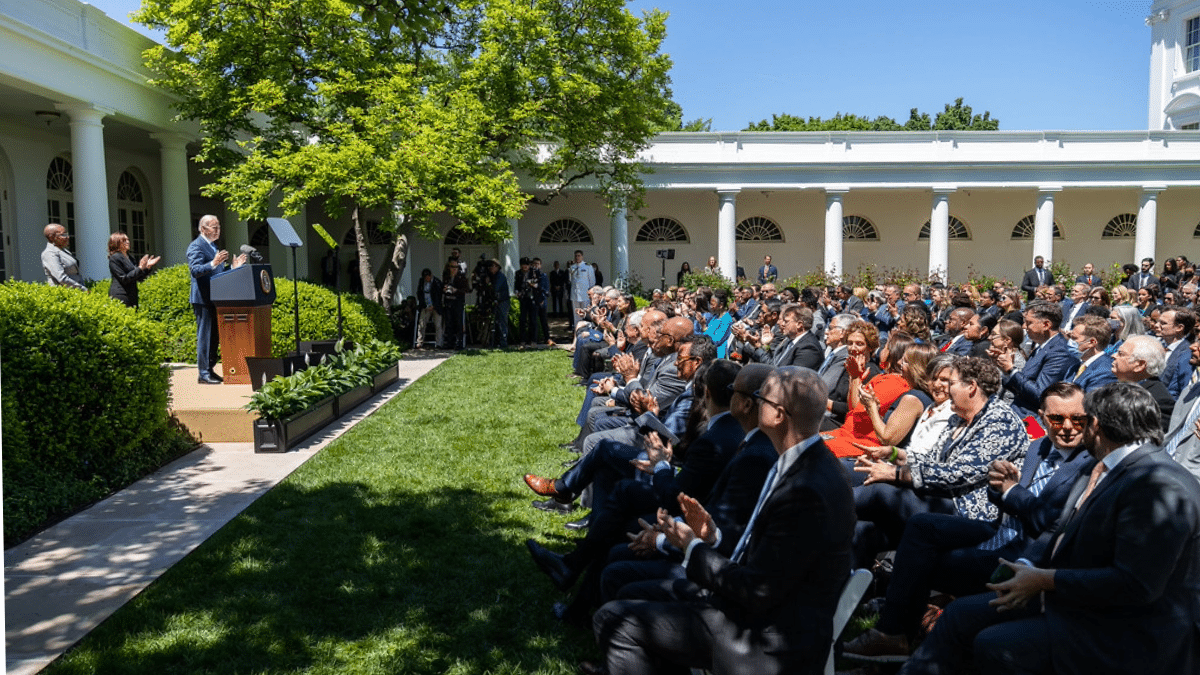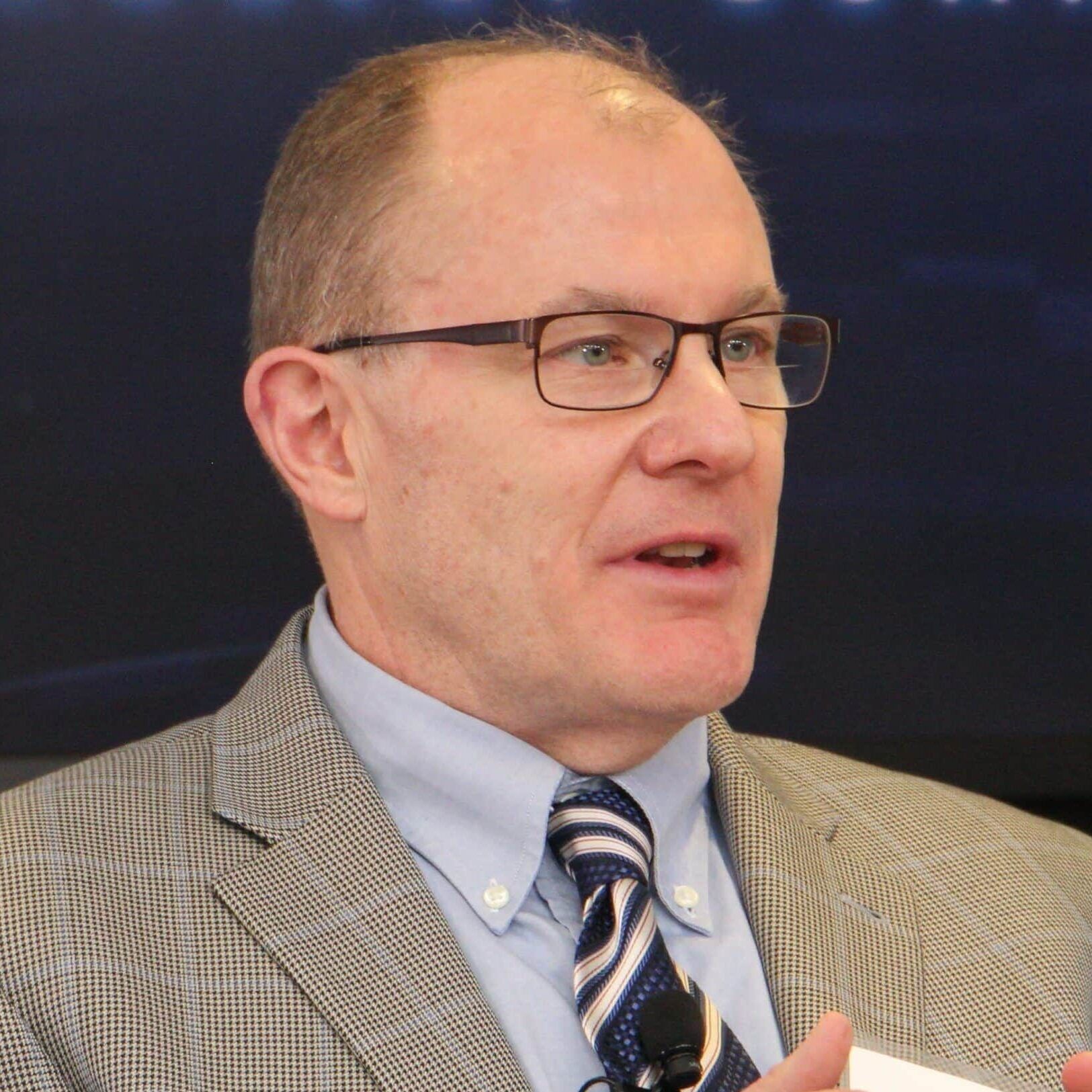US Affordable Connectivity Program is Closing the Digital Divide
John B. Horrigan / Nov 29, 2023
President Joe Biden delivers remarks on lowering costs and expanding access to the internet through the Affordable Connectivity Program, part of the Bipartisan Infrastructure Law, Monday, May 9, 2022, in the Rose Garden of the White House. (White House Photo/Adam Schultz)
In the wake of the Biden Administration’s request for a $6 billion extension of the Affordable Connectivity Program (ACP), some in Congress question the program’s true impact on bringing broadband access to new users. Critics have pointed to a lack of data confirming whether the program’s impressive enrollment figures translate into a meaningful increase in internet access for previously disconnected individuals.
Admittedly, the data was sparse until now. As policymakers consider the future of the ACP program, my new analysis of program enrollment and broadband adoption data demonstrates that the program effectively meets its primary mission: closing the digital divide.
ACP enrollment rates have been robust since the program’s inception at the beginning of 2022. Through October of 2023, 21.5 million households have enrolled in the program, which means that approximately 18% of US households with broadband subscriptions rely on the subsidy.
ACP sign-ups have been particularly strong in places where poverty rates are high, and are notably the same in urban and rural areas. Enrollment is also higher than expected in areas with households headed by Black people and Latinos, and in places with high unemployment.
Overall, ACP enrollment is growing in the places and among the people that the program targets, and not only that, but it is also helping people who did not previously have access to get online. In other words, the answer to the question of whether the ACP is closing the digital divide is a clear yes.
The success of the program is best understood by looking at national broadband trends dating back to before the pandemic. American Community Survey data show that from 2019 to 2021, there was significant growth in two metrics of broadband subscriptions:
- Broadband of any type (which includes wireless and wireline broadband service) showed an increase from 86% of all households to 90% from 2019 to 2021.
- Wireline service (i.e., households with cable modem, fiber, or DSL service), where the increase was from 71% to 76%.
The strong 2019-2021 home broadband adoption growth was likely due to pandemic-driven initiatives to get and keep people online – through expanded discounts, pledges by carriers not to disconnect subscribers during pandemic shutdowns, economic stimulus, and the Emergency Broadband Benefit, the predecessor of the ACP.
What role does ACP play in these figures?
Careful analysis of ACS data and ACP enrollment figures shows that the discount program helped solidify broadband gains from 2019 to 2021. The positive relationship between places that experienced rapid home broadband adoption gains and above-average ACP enrollment is evidence of this. Additionally, places that did better in broadband adoption in 2022 had strong ACP enrollment growth throughout the 2022 calendar year. The ACP, in other words, locked in 2019 to 2021 adoption progress while propping up adoption in 2022. I call this the “gain and sustain” impact of ACP on the digital divide.
The ACP enrollment data also shows that the program is aiding low-income households who live on the precipice of disconnection. These are the “subscription vulnerable,” who make up half (49%) of all homes who face severe service affordability challenges for internet service, or experience service disconnections when they struggle economically.
For some, service is out of reach without a subsidy. For others, service may be episodic in a given year in the face of household budget challenges. With a service subsidy, the home internet connection does not fall on the chopping block in the face of a temporary economic setback.
Bipartisan programs to address internet affordability, like the ACP, were driven by a new understanding of the internet’s importance to households that emerged during a public health crisis. The internet’s indispensability to daily life became clear once people had to stay at home for work, school, and medical consultations during COVID. But it is important not to lose sight of how the pandemic has made the internet more important in society than before. The new reliance on digitally-enabled methods for the delivery of government, medical, and other services will continue in a post-pandemic world.
This makes maintaining the ACP more crucial than ever. Subscription vulnerability – the challenge of maintaining broadband subscriptions for low-income households – will endure. That means the need for service subsidies will, too. Thus far, the Affordable Connectivity Program has shown itself to be an effective tool for helping people get and stay online.
Authors
